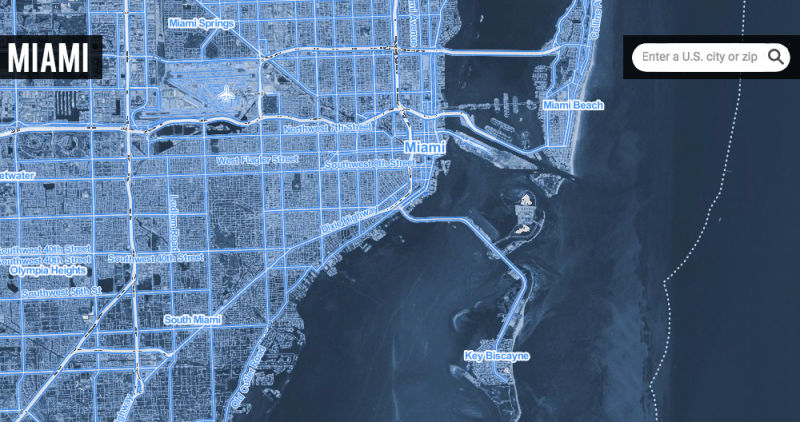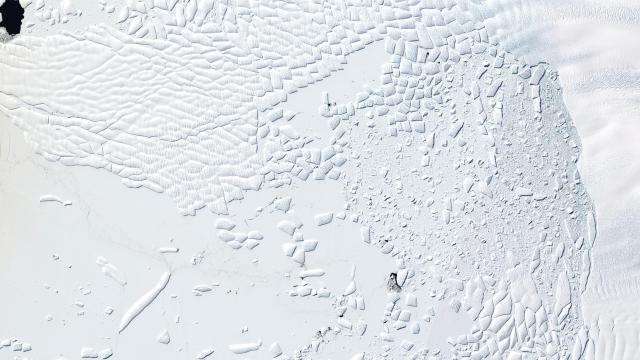As humanity continues to pump carbon into the sky, the models that predict Earth’s future are becoming increasingly complex and detailed. And yet, they’re zeroing in on a simple conclusion: if we don’t get our act together fast, Florida is totally screwed. Along with a bunch of other coastal cities around the world.
A major new ice sheet analysis, which appears as the cover story in Nature today, offers the latest dire warning that we are on the brink of dramatic and essentially irreversible sea level rise. The key finding is that the Antarctic ice sheet may be extremely sensitive to a couple degrees of warming, much more so than we thought. The authors conclude that if carbon emissions continue unchecked, Antarctic melting alone could cause more than a metre of sea level rise this century and 15m by the year 2500.
“This is just the Antarctic piece,” lead study author Robert DeConto at the University of Massachusetts told Gizmodo. “The IPCC is coming in at about one meter of sea level rise this century in their worst case scenario, but this implies that there’s the potential for a lot more.”

An illustrative map of Miami under a 6.10m sea level rise-scenario. Blue indicates regions underwater. Image: Climate Central.
Over a metre of sea level rise would turn Miami, New Orleans and other cities that sit at sea level into giant wading pools. But it gets a lot worse if you start looking further into the future. In their study, DeConto and David Pollard incorporated several new physical feedback processes into models of Antarctic ice sheets. These include the accumulation of meltwater on ice sheet surfaces, and the collapse of cliffs that hold back the flow of inland ice into the ocean. The result? A few degrees of warming may cause huge chunks of Antarctica to fall into the sea over centuries to come.
Unfortunately for humans, the results line up very nicely with what geologists believe happened during the last interglacial period 125,000 years ago, when the planet was maybe a degree or two warmer than it is today, but global mean sea level was up to 18m higher.
“Dave and I have been working for years to develop these models,” DeConto said. “We’d always been challenged to produce high sea level events in the geologic past. It wasn’t until we added new physics to the model that we were able to reproduce some of these ancient sea level events. That gives us confidence that we could be looking at key processes.”
A study published in PNAS last spring looked at what would happen to US coastal cities if sea level rose 10m, and found that six large cities in Florida and two in Louisiana would be totally submerged. Given that this study’s worst case scenario is quite a bit worse, we can only assume that more cities will be added to that list. It’s looking increasingly likely that the citizens of Florida are going to have to be permanently resettled to large luxury cruise ships (probably their preference) or the Moon (not a terrible idea).
Or, we could enact policies that will promote a rapid shift to renewable energy sources — our best shot at preventing our coastlines from drowning. The scientists will continue to tinker with their models, but the choice before us has never been clearer.
Aerial image of an ice cliff at the terminus of Thwaites Glacier, West Antarctica on 9 January 2016. Image: Knut Christianson
